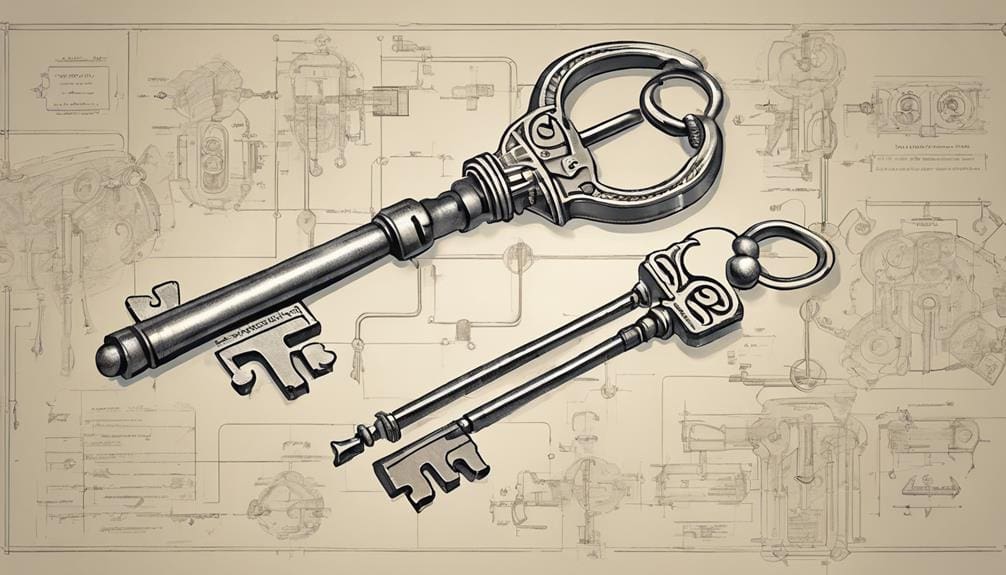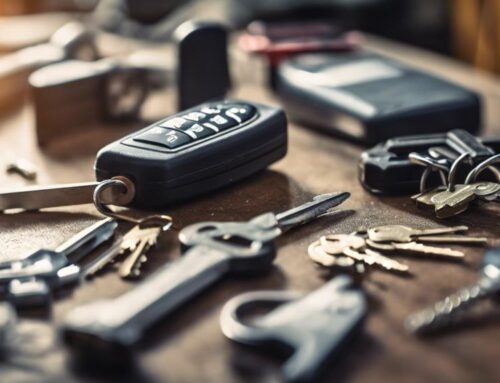A Master Key System in locksmithing creates a hierarchical structure of keys, allowing different levels of access to various locks. You’ll manage access levels with specific keys, ensuring only authorized individuals can enter certain areas. These systems reduce the number of keys needed and enhance overall security by preventing unauthorized access and key duplication. High-security master keys use patented blanks and advanced cutting techniques to resist drilling and picking. Establishing a clear key hierarchy and using key schematics are critical for effective design. To fully understand how this system can benefit your security protocols, explore further insights.
Key Takeaways
- A master key system creates a hierarchical structure of keys, allowing different levels of access to locks.
- It enables specific locks to align with distinct security needs, enhancing overall security.
- The system uses patented key blanks and advanced cutting machinery for high security and resistance to unauthorized duplication.
- Master key systems reduce the number of keys needed, offering convenience without sacrificing security.
- They allow only authorized personnel to access specific areas, ensuring controlled and limited access.
Understanding Master Key Systems
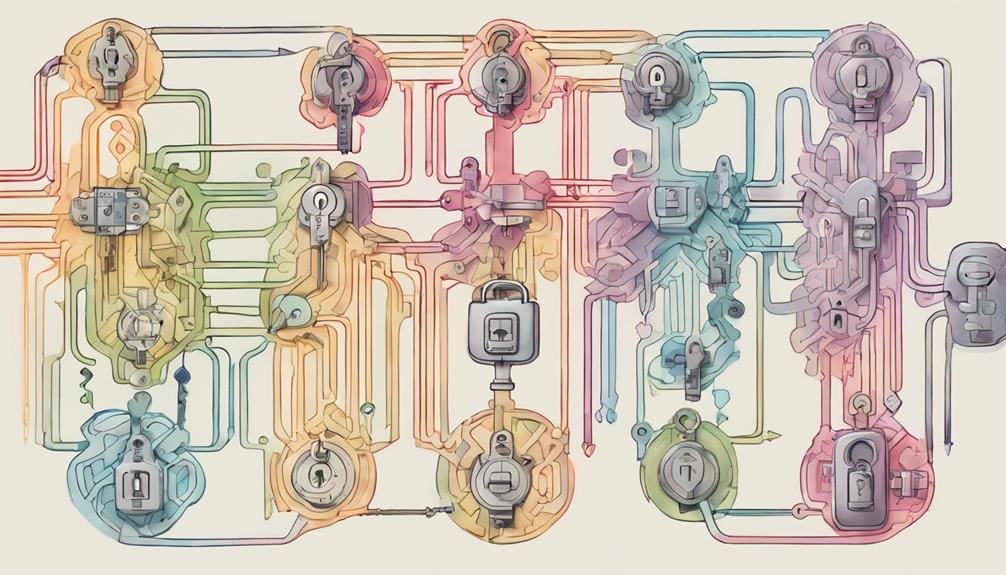
Understanding master key systems starts with recognizing how they create a hierarchical structure of keys, providing distinct levels of access to various locks. In a well-designed access control system, master key systems guarantee that specific locks and keys align with your security needs. You’ll manage different levels of access through precise key management, employing restricted keyways and thorough key tracking. This meticulous approach prevents unauthorized high-level access and key duplication. Your lock systems will be structured to meet various access requirements, from general to high-security areas. Effective key management ensures that the right individuals have the proper access, maintaining both convenience and security. Proper documentation and tracking are essential to uphold the integrity of these systems.
Benefits of Master Key Systems
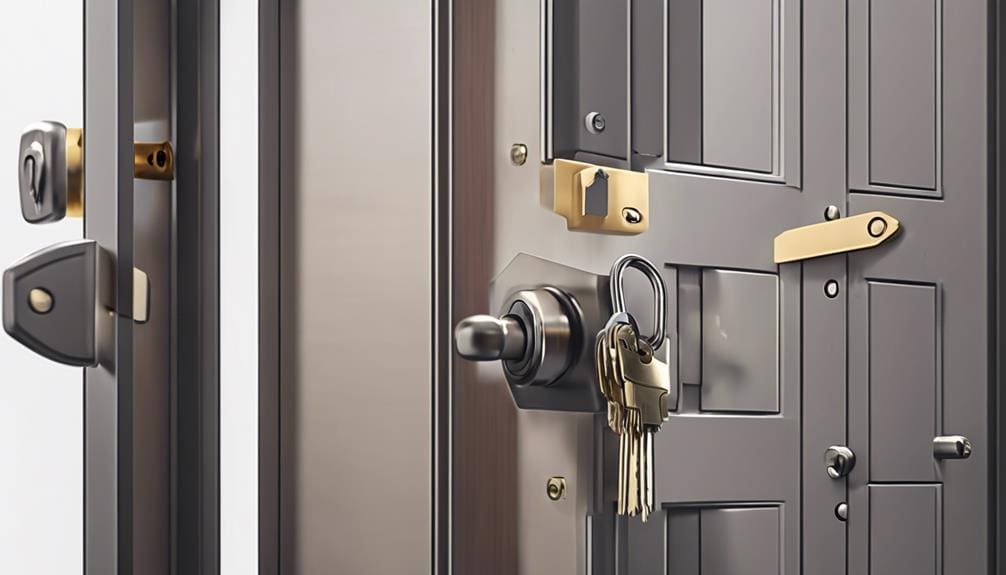
Master key systems boost building security by limiting unauthorized access and enabling hierarchical key control. By implementing a master key system, you can markedly enhance access control and security. These systems reduce the number of keys you need to carry, offering convenience and efficient key management. A well-defined key hierarchy and hierarchical structure ensure that only authorized personnel can access specific areas, promoting restricted access and preventing security breaches. The master key system also allows high-level stakeholders supervisory or emergency access, simplifying key organization. Utilizing a master key system means you can manage access levels effectively and safeguard your building against unauthorized entry, ultimately making your environment safer and more secure for everyone involved.
Master Key Levels

In a master key system, hierarchical key levels like the Great Grand Master Key (GGMK), Grand Master Key (GMK), Master Key (MK), and User Key guarantee precise access control across different security tiers. The GGMK provides complete access to all locks within the system, ensuring top-level control. The GMK offers multi-site access control capabilities, making it ideal for complex facilities. The MK opens all locks below its level, streamlining access for mid-tier managers. Finally, the User Key offers low-level access to specific locks, maintaining tighter security for everyday users. This layered approach in a master key system allows you to control who can open which doors, enhancing overall security and operational efficiency.
High Security Master Keys
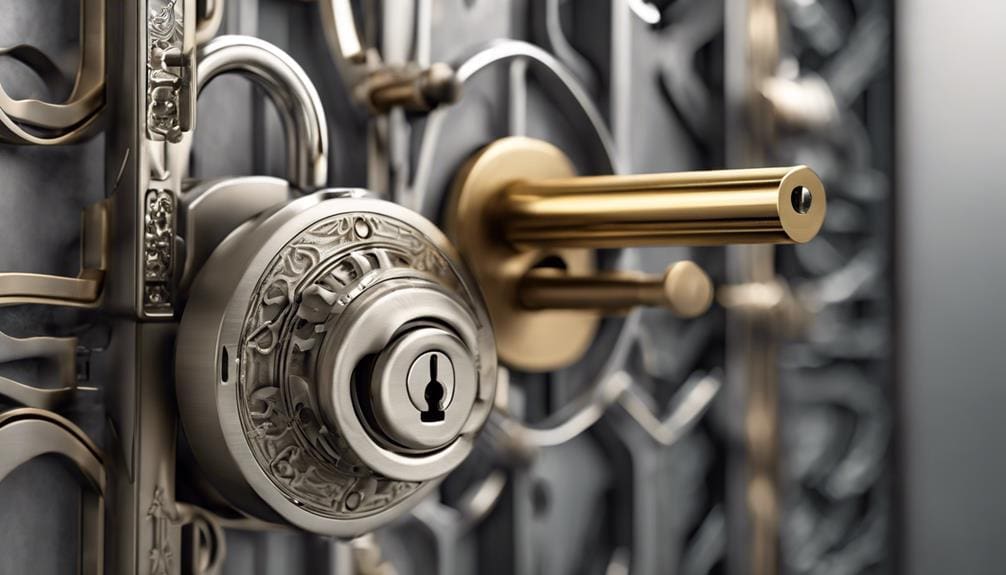
High security master keys set the gold standard for access control by using patented key blanks and advanced cutting machinery to thwart unauthorized duplication. These keys offer unparalleled security measures through:
- Patent-protection: Guarantees that only certified individuals can duplicate keys, enhancing key management.
- Advanced locks: Resistant to drilling and picking, providing robust security for your needs.
- Specialized key cutting machines: Necessary for precise key cutting, preventing unauthorized key duplication.
Designing a Master Key System
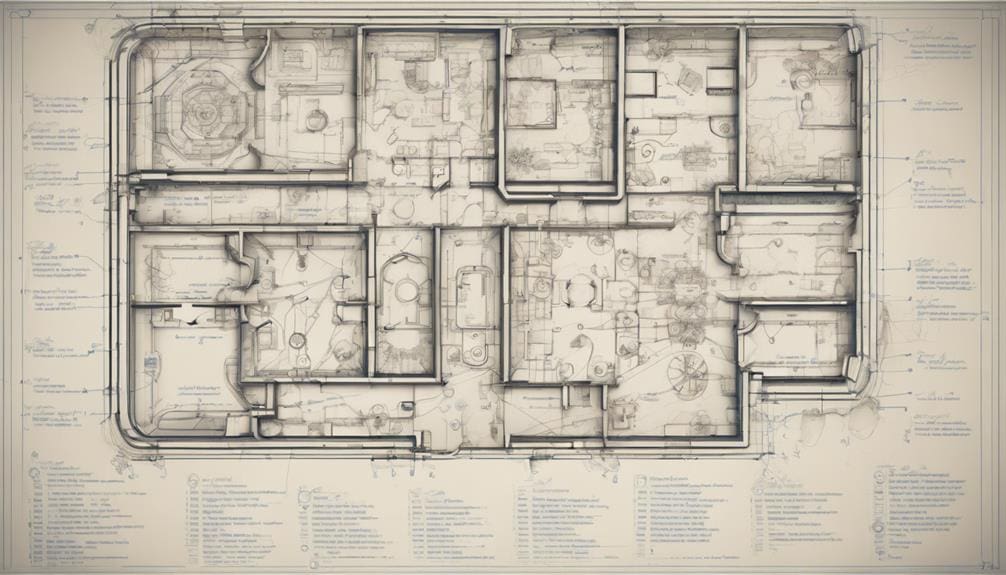
To design an effective master key system, start by establishing a clear hierarchical structure that defines which keys access specific locks within the organization. Utilize key schematics to visualize the key hierarchy and locks’ arrangement. Conduct keying conferences to discuss security levels, key control, and key management roles. Decide which locks will be keyed alike and which will have unique key cylinders. Clearly outline key access levels to guarantee each user has the appropriate lock and key permissions. Custom schematics are vital for client approval, providing a detailed overview of the master keying system. Plan for potential system expansion, ensuring new keys and locks integrate seamlessly into the existing framework without compromising security or functionality.
Maintaining Your Master Key System

Maintaining your master key system requires meticulous record-keeping and regular audits to guarantee security and functionality. Detailed key records are essential for each key code used in rekeying or expanding your key system. Implement these steps to ensure peak performance:
- Regular Audits: Verify access levels and key management practices to prevent unauthorized access.
- Electronic Locks: Shift to electronic locks for advanced security features and ease of key system expansion.
- High Security Standards: Use high-security, patented key systems to enhance protection against key duplication.
Adopt industry standards and keep up with locksmith industry trends like electronic locks and key cutting innovations. Properly maintaining your master keyed lock system ensures it serves others reliably and securely.
Frequently Asked Questions
What Is the Difference Between a Key and a Master Key?
Did you know that 70% of office buildings use master key systems? A regular key opens one specific lock, while a master key can open multiple locks within a system, offering higher-level stakeholders streamlined access. This reduces the clutter of numerous keys and minimizes security risks from lost key rings. Master keys are essential for managing access control efficiently, ensuring secure and convenient entry for authorized personnel.
What Does It Mean for a Lock to Be Master Keyed?
When a lock is master keyed, it means you can use a master key to open it, along with its unique key. You create a system where the master key overrides individual keys, offering controlled access. This setup is essential in commercial settings, providing multiple access levels and maintaining security. By implementing master keying, you guarantee efficient, secure access management for various users, enhancing overall operational efficiency.
Does a Master Key Unlock Everything?
No, a master key doesn’t open everything. In a master key system, keys have different access levels. The master key opens multiple locks, but not necessarily all of them. Each key is designed to open specific locks based on a hierarchical structure. This guarantees controlled access, allowing you to serve others efficiently while maintaining security. Always make sure keys are distributed according to the predefined access levels for best security management.
How Do You Tell if a Key Is a Master Key?
To tell if a key is a master key, look for identifying letters or numbers stamped on it. These markings indicate its hierarchical level within the key system. Additionally, test the key by checking if it opens multiple locks that are part of the same system. Master keys are designed for broader access, so if the key opens various locks, it’s likely a master key.

